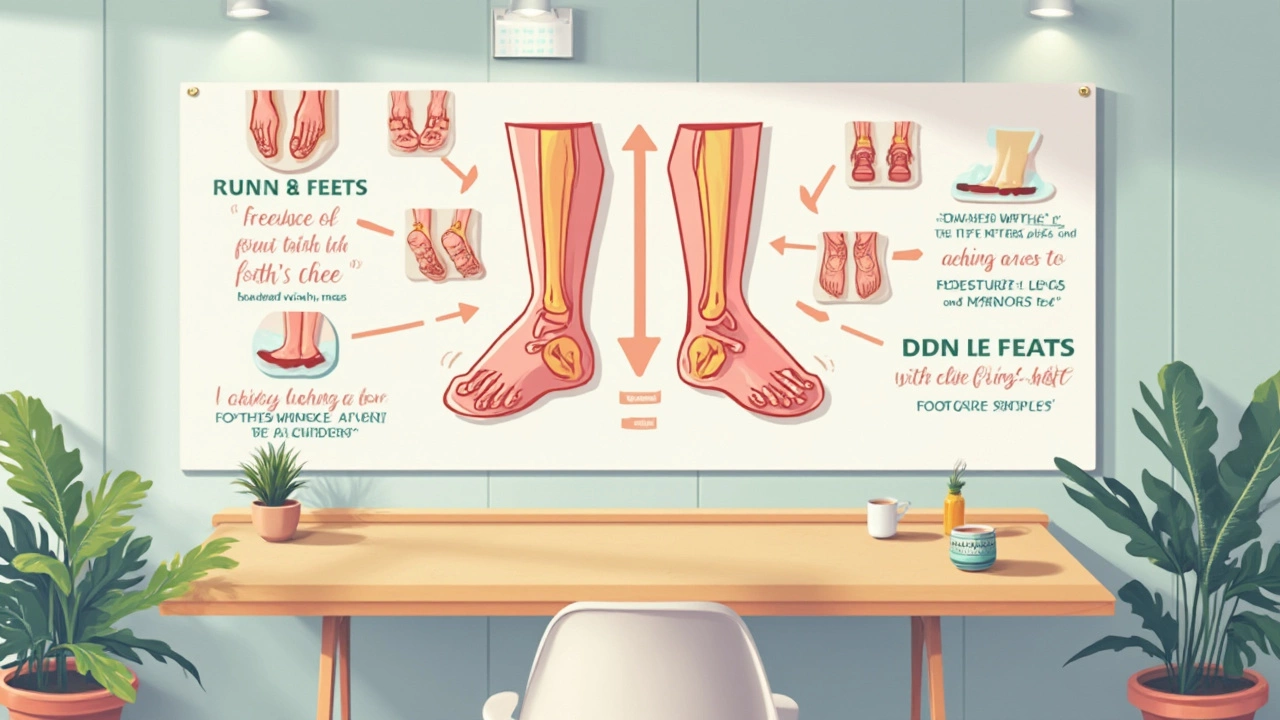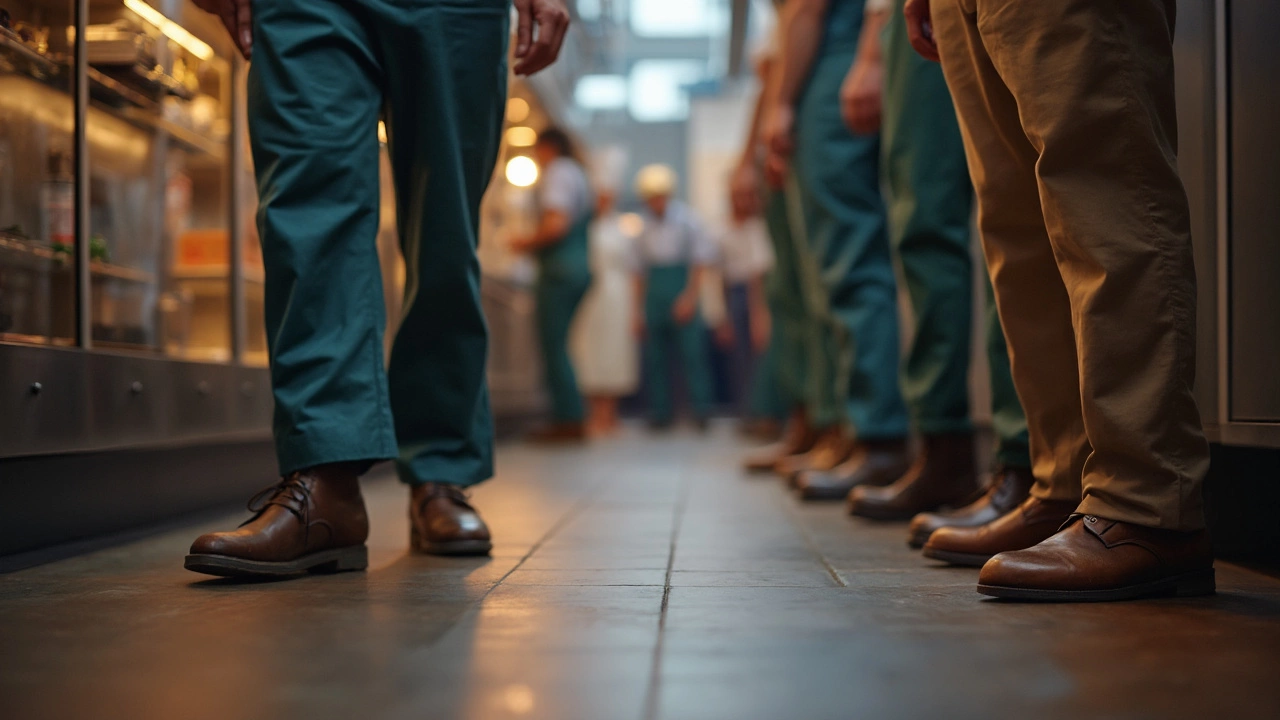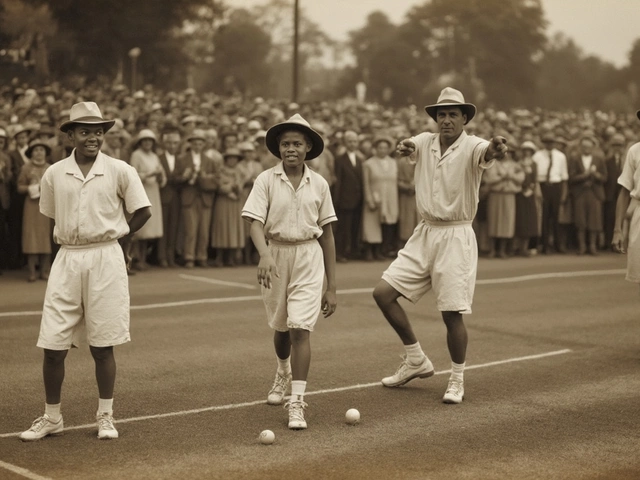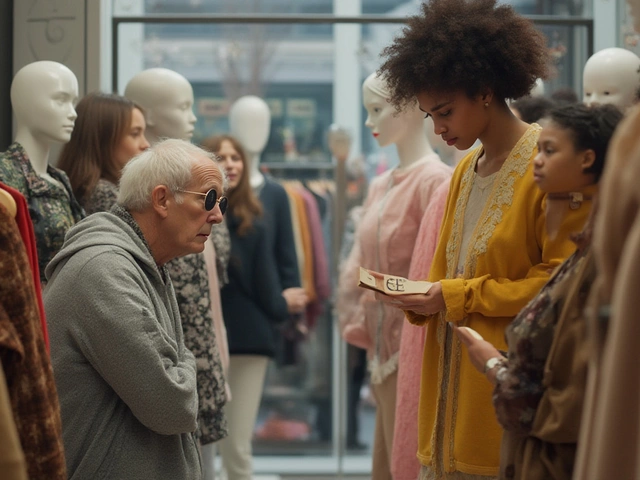Ever come home after a crazy-long shift and practically crawl to the couch, shoes and socks tossed across the room? Yeah, I’ve been there. Standing for 12 hours isn’t just exhausting—it can wreck your feet, knees, and even your back if you’re not careful. Sometimes it’s the shoes, sometimes it’s the floor, but most of the time it’s just the wear and tear your body takes.
So, is being on your feet for 12 hours actually bad? It’s not a simple yes or no, but there’s a lot you can do to make things easier. From my time working retail and warehouse gigs (before kids, and before I really cared about shoes), I learned the hard way what constant standing can do. It’s about more than just sore arches or tired calves—sometimes the pain sticks with you long after closing time.
If you’re spending huge chunks of your day upright, even small changes can make a difference: better shoes, smarter breaks, and a couple of quick tricks can keep you moving without feeling broken by the end of your shift. Let’s get into what’s actually happening to your body during those long hours—and what you can do about it.
- Why Long Hours Standing Wears You Down
- What Your Body Tells You: Signs of Trouble
- Choosing the Right Shoes for 12-Hour Shifts
- Real Tips to Survive Long Days on Your Feet
- When to Worry: Health Risks from Standing Too Long
- Simple Fixes to Feel Better After Work
Why Long Hours Standing Wears You Down
Standing for long stretches—especially those 12-hour days—pushes your body way harder than you think. Every muscle in your legs is working overtime, just to keep you upright and balanced. Your blood has it rough too. When you stand still all day, blood pools in your lower legs and feet. Over time, this can make you feel super sore and swollen, or even lead to things like varicose veins in the long run.
Joints like your knees, hips, and lower back also take a beating. When you’re on your feet for hours, your joints are constantly compressed by your body weight. That’s why working those marathon shifts in bad work shoes can mean you’re limping before lunch. Your feet flatten out, your arches drop, and you might even notice heel pain or stiff toes by the end of a long day.
Being on the move can help a bit, but if most of your shift is at a register, a workbench, or a hospital station, you’re not getting that blood flowing like you would from regular walking. One study from Canada found that hospital workers who stood for over 8 hours a day were way more likely to complain about lower back pain than those who moved around more.
Check out what happens during long periods of standing:
- Muscle fatigue builds up fast—especially if you’re not wearing supportive shoes.
- Circulation drops in your lower legs and feet, making them swell and feel heavy.
- Knee and hip joints get stiff and sore—sometimes the pain lingers even after you sit down.
- Back pain kicks in when your core muscles tire out from too much standing.
On top of all that, hard floors make things even worse. Standing on concrete piles on extra stress, which is why those in factories, warehouses, and big box stores feel the impact more than folks with cushier flooring. If your work shoes are also lacking good shock absorption, you’re basically multiplying the hurt.
Here’s a quick look at what can hit you after a long day standing:
| Body Part | Common Issues |
|---|---|
| Feet | Pain, swelling, plantar fasciitis |
| Knees | Aching, stiffness, ligament strain |
| Back | Lower back pain, muscle fatigue |
| Legs | Varicose veins, heaviness |
So yeah, those long shifts really add up. But there are ways to handle it better—which is what we’ll get into next.
What Your Body Tells You: Signs of Trouble
Your body is basically waving red flags when standing all day starts causing problems. Ignoring them just makes it worse. Those aches aren’t just normal—they can hint at real issues if you power through too many long shifts on the wrong shoes or surfaces.
The first thing most of us notice is foot pain. It often starts as a dull ache in the heels or arches (hello, plantar fasciitis). Your feet might swell, throb, or feel like you’re walking on pebbles by hour ten. If you have bad work shoes, this gets worse fast.
Then there’s the knee and lower back pain. Standing for hours puts extra pressure on those joints, especially on hard concrete or tile. Your legs might feel super tight or heavy. If you get pins-and-needles or numbness, that’s your nerves complaining.
Some clear warning signs you shouldn’t ignore:
- Bluish or swollen feet and ankles (fluid is pooling from being still for too long)
- Sore, tight calves or cramps
- Pain that gets worse every shift instead of better
- Heat or redness in your feet or lower legs—could be inflammation
- Back twinges that show up late in the day
- Numbness or tingling—never a good sign
If you work standing all day and you notice these symptoms, it’s smart to take them seriously. A 2022 Canadian study on retail workers found that over 50% reported daily foot or lower leg pain, with most saying it affected their job performance and mood at home. That’s a lot of missed soccer games and cranky evenings.
Basically, if your body is complaining during your shift or you’re hurting hours later, it’s not something to brush off. The right work shoes can help, but masking the pain only leads to bigger trouble down the road.
Choosing the Right Shoes for 12-Hour Shifts
If you’re stuck on your feet all day, your shoes make or break your shift. Most people grab whatever looks okay, but that’s a fast track to sore feet, blisters, and aching backs. There’s real science behind picking the right work shoes for standing all day. Good shoes can actually protect you from joint pain, bunions, and even those weird burning sensations that show up after lunch.
What should you actually look for in a reliable work shoe?
- Cushioning matters: A solid, cushioned sole can help absorb shock and support your arch. This keeps pressure off your heels and the balls of your feet. Brands like Brooks, New Balance, and Skechers are favorites among folks working healthcare and food service for a reason—it’s about the squish, not the style.
- Support is king: Flat shoes with zero arch support mean more pain as the day drags on. Get shoes with contoured footbeds, or toss in aftermarket insoles like Superfeet or Dr. Scholl’s for extra arch backup.
- Room matters: Tight toes or heels that slip make for blisters and black toenails. Your shoes should fit snug but roomy—think about a thumb’s width in front of your longest toe.
- Non-slip soles: Especially if you’re on tile or concrete, slip-resistant shoes protect you and your coworkers from the embarrassment (and injury) of a fall. OSHA actually recommends these for hospitality and warehouse folks.
Not all work shoes are created equal. Here’s some interesting stuff: a 2023 workplace comfort survey found that about 65% of workers standing over 10 hours felt less pain when they upgraded to better shoes, even without changing anything else about their routine.
| Feature | Why It Matters |
|---|---|
| Cushioned Sole | Reduces tiredness and absorbs floor impact |
| Arch Support | Prevents heel and knee pain long term |
| Roomy Fit | Cuts down on blisters and squished toes |
| Non-Slip Grip | Helps avoid slips at work |
A quick hack: rotate between two pairs if you can afford it. Shoes need to dry and return to shape between wears. Plus, your feet won’t get used to pressure points as quickly.
Bottom line: skip the bargain slip-ons and invest in real work shoes if you know you’ll be powering through those 12-hour shifts. Your feet—and honestly, your whole body—will thank you.

Real Tips to Survive Long Days on Your Feet
Alright, if you’re clocking in for a 12-hour shift on your feet, you need more than luck. It doesn’t matter if you’re a nurse, barista, or assembly worker—your feet go through the wringer. Here’s what actually helps, not just wishful thinking.
- Pick Shoes that Work Overtime: Your choice of work shoes makes or breaks your day. Look for shoes with real cushioning (forget those $10 slip-ons), solid arch support, and a non-slip sole. Swap shoes out every 8-12 months if you can, because padding wears down fast. The American Podiatric Medical Association puts a big stamp of approval on brands designed specifically for people who stand all day.
- Compression Socks Are Not Just for Runners: They help with blood flow and cut down on swelling. You’ll find them in every hospital for a reason. Pick a pair with mild to moderate compression, and your calves will feel way less tired.
- Take Your Breaks—Really: It’s easy to skip breaks, but even five minutes off your feet every couple hours makes a real difference. A 2022 survey by the American Nurses Association found nurses who broke up their shifts with real breaks reported 22% less foot pain compared to those who powered through.
- Move When You Can: Don’t just stand still in one place. Shift your weight. Wiggle your toes. Walk a few steps whenever possible. Staying in one spot is way harder on your joints and muscles than moving.
- Stretch Like You Mean It: Quick calf, hamstring, and low-back stretches at breaks help a ton. Don’t wait until you’re stiff—do it while you work. Even bending forward to touch your toes (or as far as you can) loosens things up.
- Use Floor Mats If You Can: If work allows it, rubber anti-fatigue mats reduce strain big-time. They’re proven to cut leg fatigue, especially on concrete floors.
| Trick | Results Noticed |
|---|---|
| Switching socks mid-shift | Drier, less smelly feet (and new energy!) |
| Changing shoes during the day | Less foot pain, especially in the heel |
| Rolling feet on a water bottle at lunch | Looser arches, less tightness |
| Setting a break reminder | More likely to actually sit down |
If you take even half these tips seriously, you’ll notice a difference by your next paycheck. Don’t tough it out—there’s smart ways to win at standing all day and still be able to do normal stuff after your shift.
When to Worry: Health Risks from Standing Too Long
There’s a big difference between a little soreness at the end of your shift and something you really need to pay attention to. Staying on your feet for hours every day can lead to real problems if you don’t take care of yourself—or if you keep ignoring warning signs. Here’s what you might run into, especially if you’re stuck in bad work shoes on unforgiving floors.
First off, swelling in your feet and ankles is super common. Your blood has to fight gravity all day, and that means fluid likes to settle down low. If your shoes leave deep marks or your ankles puff up like marshmallows, don’t write it off as normal.
The next thing is pain—especially in your heels, arches, knees, or back. Plantar fasciitis (that stubborn ache under your foot) is practically a rite of passage for folks who stand all day. And over time, it can set you up for joint problems that don’t go away when you clock out.
Some of the legit health risks from long-term standing include:
- Chronic back pain
- Varicose veins (those lumpy, purple veins that show up, especially if your parents had them)
- Nerve issues in your feet (tingling, numbness, or just weird sensations)
- Sore knees and hips, sometimes leading to arthritis
- Fatigue that doesn’t go away, even after a weekend off
If you want some numbers, about 1 in 5 people who stand most of the day end up with some kind of lower-limb problem by middle age. And jobs that mean 8+ hours on your feet (think warehouse, retail, restaurant gigs) send thousands of people to the doctor for foot pain or joint checks every year.
| Risk | Early Signs |
|---|---|
| Varicose Veins | Visible veins, aching legs |
| Plantar Fasciitis | Sharp heel pain in the morning |
| Back Pain | Stiffness, soreness, can't stand up straight |
| Nerve Issues | Burning, tingling in toes |
So, when do you really need to worry? If the pain sticks around when you’re at home, you see new swelling or bruising, or your toes get numb often, that’s not something to tough out. Chronic pain or swelling is a sign you need a break, maybe better work shoes, and sometimes a visit to a healthcare pro. Don’t just wait for things to get better—nip problems in the bud before they hang around for the long haul.
Simple Fixes to Feel Better After Work
Even if your work shoes are top-notch, standing all day takes a toll. Luckily, there are easy ways to bounce back after a long shift. Start simple—don’t underestimate how much these quick fixes actually help.
- Elevate Your Feet: Kick your feet up above heart level for 15-20 minutes. It sounds basic, but it helps drain fluids and cuts down swelling fast.
- Stretch it Out: Tight calves and sore arches don’t have to be your daily routine. A few minutes of stretching can do wonders. Try basic moves like flexing your toes toward you, rolling your ankles, or even using a tennis ball under your foot.
- Ice Where it Hurts: Got a specific sore spot? A bag of frozen peas wrapped in a towel works great. Ten minutes can ease pain and keep inflammation down.
- Compression Socks: They’re not just for your grandma! Compression socks boost circulation and stop those heavy, aching legs at the end of your shift.
- Switch Shoes at Home: As soon as you’re through the door, swap out your work shoes for something soft and supportive (think memory foam slippers or sneakers).
- Hydrate and Refuel: Dehydration makes muscle soreness worse. Drink extra water, and grab a snack with some protein and a little salt—you’ll notice a difference in how your body bounces back.
If you want to know you’re not alone, check out this quick table from a 2023 survey of warehouse workers on how they deal with post-shift pain:
| Fix Used | Percent Who Said It Helped |
|---|---|
| Elevating feet | 76% |
| Stretching after work | 82% |
| Compression socks | 59% |
| Ice packs | 48% |
The real game-changer is consistency. Making these small changes a part of your regular post-work routine works better than trying to tough it out. Even if your job demands standing all day, you’re not stuck feeling wiped out every night.





